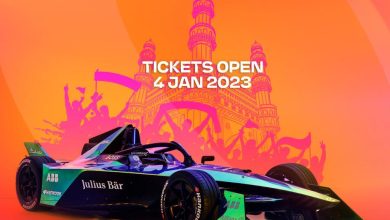
Red Bull have an aerodynamic genius on their team in the form of Adrian Newey. Since he joined the team back in 2005 after successful stints at Williams and McLaren, he has produced some aerodynamic marvels which have won a grand total of 9 F1 world championships in the hands of Sebastian Vettel, Max Verstappen and also Vettel’s then-teammate Mark Webber who helped secure the team’s crown. Now, imagine a Newey-designed hypercar which is available to purchase. You need not imagine much, for that will become a reality in the near future!
Called the RB17 as per following the team’s official nomenclature, the hypercar will be powered by a V8 which has an estimated power output of over 1,100HP and will be designed around a carbon composite tub and will utilise the mythic ground effect as well, just like the real-life 2022 F1 cars. Built by Red Bull Advanced Technologies, it will be a two-seat vehicle, so it’s out of the equation as being a family car!
(If you’re wondering how the RB17 name doesn’t clash with an actual Red Bull F1 car’s name, that’s because there was no RB17- 2021’s car was an evolution of the 2020 car, and hence was called RB16B instead of RB17)
“The RB17 marks an important milestone in the evolution of Red Bull Advanced Technologies, now fully capable of creating and manufacturing a series production car at our Red Bull Technology Campus,”
“Further, the RB17 marks the first time that a car wearing the Red Bull brand has been available to collectors
-Red Bull Team Principal Christian Horner
“The RB17 distills everything we know about creating championship-winning Formula 1 cars into a package that delivers extreme levels of performance in a two-seat track car.
“Driven by our passion for performance at every level, the RB17 pushes design and technical boundaries far beyond what has been previously available to enthusiasts and collectors.”
-Red Bull Chief Technical Officer Adrian Newey
Production is slated to begin in 2025, with just 50 units being built. Owners of the RB17 will have access to Red Bull’s simulators, vehicle program development, on-track training and more while the team’s factory services and maintains the car. The cost for all this? Just £5 million! A steal and an absolute bargain, if you ask me.




